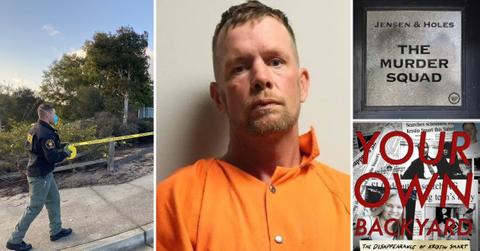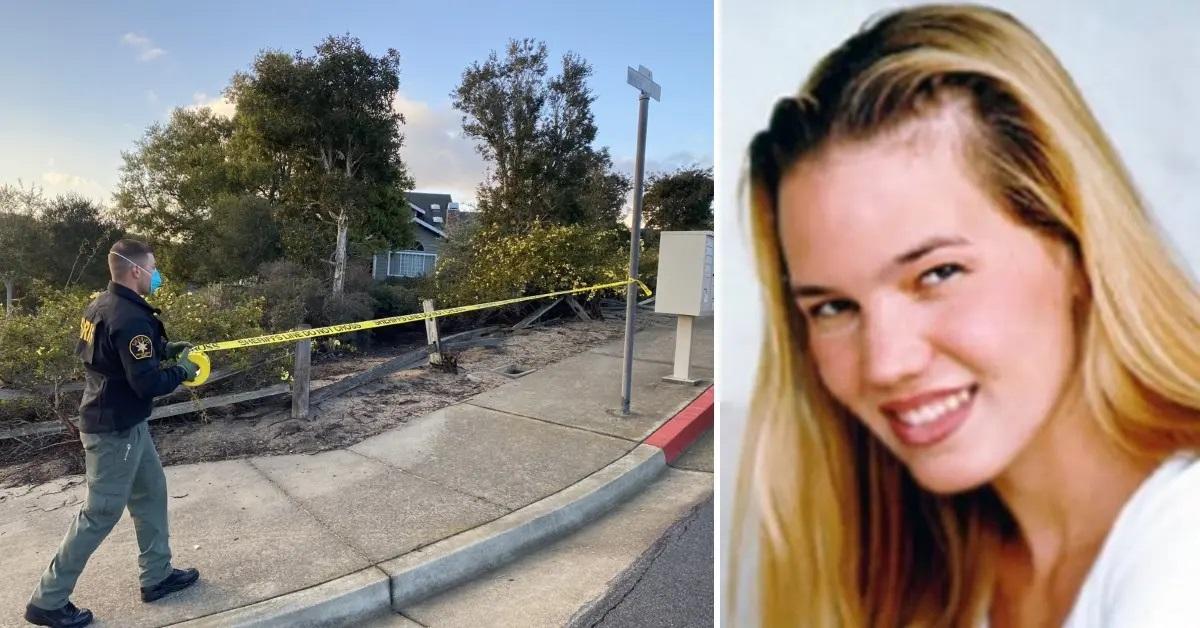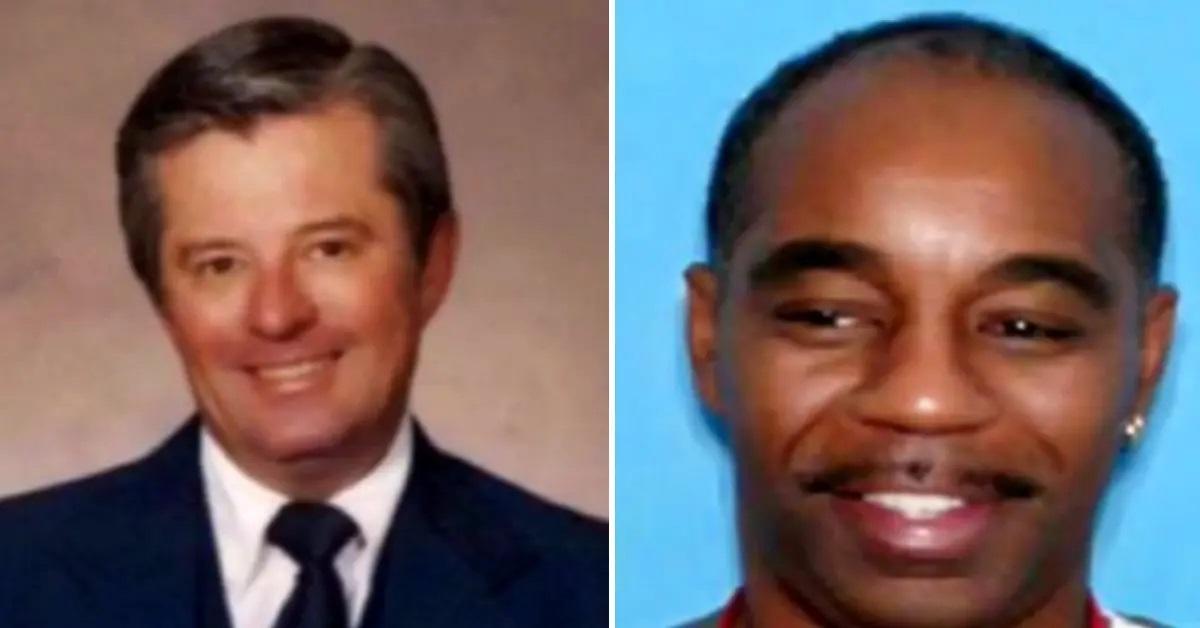No longer on the sidelines: How amateur sleuths are helping cops solve cold cases

Kristin Smart was murdered in May 1996 after a night out with college friends. Her suspected killer, Paul Flores, was arrested on April 14, 2021. His father, Ruben Flores, 80, has been implicated in helping his grown son cover up the crime. A preliminary hearing for both men, in which witness testimony is being presented and evidence submitted, is underway in California.
None of it might have happened if not for upstart media help.
Kristin’s family, who started their own billboard campaign to help generate leads, has publicly thanked Chris Lambert, who began a podcast called “Your Own Back Yard,” which featured Smart’s case and helped arrest the Flores duo.
Lambert hypothesized the local police and San Luis Obispo County Sheriff’s Office missed evidence early in the investigation. He built a timeline, then tracked down new witnesses. This enabled authorities to pinpoint Ruben Flores’s property as a key location to secure more evidence. The search warrant allowed the use of cadaver dogs and ground-penetrating radar and led directly to finally arresting the two men, who had long been suspected by Kristin’s family.

San Luis Obispo Sheriff Ian Parkinson credited Lambert as helping solve the crime at a press conference announcing the arrests of Paul and Ruben Flores.
“The podcast led to our interviewing a previous unknown witness and with the Sheriff’s court order we intercepted cell phone and text messages,” Parkinson commented. “In February of 2020, we served search warrants at the homes of the sister, mother (Susan Flores) and father (Ruben Flores) and gained physical evidence that led to the service of additional search warrants in April.”
THE SLEUTHING REVOLUTION
Local media has covered the story of how Lambert, a musician from Orcutt, California, helped solve the Smart case. Podcasts are proving to be an excellent way to “get loud” as podcaster Billy Jensen from “The Murder Squad” frequently reminds listeners. But podcasts are just one of the latest crime-fighting tools: traditional media, true crime publications and social media are making a big impact. Combined with the extraordinary potential of genetic genealogy, amateur and professional sleuths are partnering to solve long-forgotten cold cases.
Their tools are many, from Facebook groups to media outlets such as “Dateline NBC.” Publications, podcasts, and even conventions like CrimeCon are fueling a desire to pitch in or take the lead to help solve real-life cases.
The phenomenon began with “America’s Most Wanted” and “Unsolved Mysteries,” where audience members could call in to tip lines. In recent years, amateur detectives are using an incredible variety of news and entertainment outlets to put pressure on local law enforcement to solve crimes, or in some cases, generate new leads. From cases like the murder of Jacob Wetterling to decades-old mysteries, law enforcement, the media, and the public are working on the same side.
THE OLD AND RESURRECTED
Courtney Coco was a 19-year-old receptionist in a dental office and the youngest daughter of Stephanie Belgard, who lived near Alexandria, Louisiana. Her parents came back from a weekend camping trip and found no sign of Courtney, who had agreed to watch their dogs for a couple of days. The next morning, October 4, 2004, Stephanie received a phone call from the police.
Courtney’s body was found 200 miles away in an abandoned building in Winnie, Texas. Police had few leads and there was no apparent motive. The case languished without enough evidence at the scene or in Courtney’s life to determine who might have targeted her.
In 2018, the Alexandria Police Department assigned Courtney’s case to Tanner Dryden. He knew her car had been found a week after her body, in Houston, and DNA was gathered from the vehicle. Dryden partnered with the Sheriff’s Office and began tracking down every lead, no matter how small. He collaborated with anyone willing and able to work toward a resolution.
In October 2020, the case was featured on “Dateline NBC.” Shortly before Dateline picked it up, around the anniversary of Courtney’s disappearance, the crime was profiled on the podcast “Real Life Real Crime” beginning with Episode 12: Who Murdered Courtney Coco? Stephanie Belgard had first contacted Woody Overton, the host of “Real Life Real Crime,” in 2019. The exposure on national media outlets helped generate tips and leads.

David Anthony Burns, 43, of Boyce, Louisiana, was arrested on April 13 after an indictment by a grand jury the same day for second-degree murder.
Rapides Parish District Attorney Phillip Terrell publicly credited Overton, the retired detective turned podcaster, with helping to move the case toward resolution.
THE POWER OF SOCIAL MEDIA
The case of Vanessa Guillen finally got the attention it needed, and in the process brought some dark secrets out about military culture. Vanessa went missing on April 22, 2020, from Fort Hood, Texas, and her remains were recovered a little over two months later, about 20 miles east of the base she called home. Her family wanted answers about what happened to the 20-year-old Specialist First Class. They knew Vanessa was struggling because she told them sexual harassment ran rampant on the base.
When Vanessa went missing, her family went into action. They used every media outlet they could find to get attention shined on her case.
Vanessa had reported significant sexual harassment in the months before her disappearance, describing one of her harassers as a sergeant who was her supervisor. Evidence from witnesses led to the identification of another solider involved in her disappearance, Specialist Aaron Robinson. Shortly after authorities fingered Robinson, the soldier committed suicide as police pursued him.
Cecily Aguilar, the ex-wife of another Ft. Hood soldier and Robinson’s girlfriend, was identified as a second suspect in Vanessa’s abduction and murder. Law enforcement pieced together that Robinson and Vanessa had been working in adjacent armory buildings when he beat her to death with a hammer. Hours later, he stuffed her body into a large Pelican case and, with Aguilar's help, dismembered her body, set it on fire, and covered the remains in cement, which the pair then buried in three separate locations.
Vanessa’s remains were located near the Leon River on June 30, 2020.
Her family began a Facebook page called Find Vanessa Guillen four days after she went missing. On the podcast “The Murder Squad,” retired detective Paul Holes and investigative journalist Billy Jensen covered Vanessa’s murder in-depth and noted that, as of July 2020, there were five other unsolved homicide cases connected to Ft. Hood. Crimes in the military are not unheard of, but the record at Ft. Hood suggested a systemic problem.
As the result of Vanessa’s death and the sexual harassment she reported that was never addressed, a dozen Army officials have been reprimanded or fired.
THE OLD AND ICE-COLD
Crimes committed decades ago have benefitted from dogged perseverance and genetic genealogy. In Breckenridge, Colorado, a 37-year-old case profiled on “Unsolved Mysteries” was solved in February 2021. Two women were raped and murdered on the same night, hours apart and in different locations along a lonely stretch of mountain road on a frigid night.
The clue that tied the bodies of Annette Kay Schnee, 22, and Barbara “Bobbi” Jo Oberholtzer, 29, together was pair of orange socks, which came from the vehicle in which the first victim was abducted. The socks belonged to Annette, but one was found next to Bobbi’s body. Each woman had one sock of a unique style and color: bright orange, called “bootie” socks. (Another cold case in Texas also includes a victim called Orange Socks.)
In 2020, the work of decades on the part of dozens of law enforcement paid off when police were able to narrow down a single suspect based on DNA collected from the victims. The Orange Sock Killer, as he came to be known, was not someone who knew the women. But he left DNA and ballistics evidence, as both women were raped and shot in the back with hollow-point bullets from the same gun.
Using genetic genealogy, detectives arrested Alan Lee Phillips, 70, on Feb. 24. They began with 12,000 members of the same family tree and found their suspect in Breckenridge, a town of only a few hundred in 1982. After his name came up on the final list of possible DNA matches, they were able to positively identify Phillips by collecting his DNA in a six-month process. He was a mechanic who lived in Breckenridge in 1982.
The case was covered by “Unsolved Mysteries,” the podcast “The Trail Went Cold,” and featured on a regular basis by the local and regional Colorado news outlets, such as the Park County Bulletin. Metro Denver Crimestoppers and a genealogy company called United Data Collect were integral in working with law enforcement to solve the crimes.
A website dedicated to solving the women’s murders called rockymountaincoldcase.com provided background and details, along with media links, to chronicle progress in the case.
Their banner now reads “SUSPECT ARRESTED.”
THE BAFFLING
Another longstanding whodunit resolved with a sample of DNA stored for decades involved 51-year-old Roger Dean, a businessman from Colorado who was shot to death in 1985. The crime had strange elements, although the investigating Sheriff Tony Spurlock theorized from the beginning that Dean was involved in the crime.

Spurlock told “Unsolved Mysteries,” “We believe that Roger hired an individual to come over to basically kidnap him, take him to his bank, withdraw $30,000 from their account, and then obviously drop Roger off someplace so Roger could report a robbery and he would have that $30,000 to himself.”
Spurlock arrived at the scene of the crime over 35 years ago as lead detective and collected DNA. That that key evidence was used to solve the crime via genetic genealogy, a method pioneered in the internationally notorious case of The Golden State Killer. Spurlock and others tied the DNA to 64-year-old Michael Jefferson.
Dean was shot five times during the home invasion and robbery. Five years after his death, his widow opened a letter from the killer demanding she pay $100,000 and threatening to kill the couple’s daughter.
It wasn’t until 2003 that the Colorado Bureau of Investigation could use material from a ski mask left at the scene of the shooting to create a DNA profile. They ran it through a database without a match. It would take another 17 years before the new science of genetic genealogy would be applied to solving the mystery of who killed Dean.
The Denver District Attorney is still working with the public to puzzle together all the pieces of the crime, and tips can be submitted to dcsheriff.net.
YOUR FAMILIAL DNA COULD HELP CATCH A KILLER
Closet crime fighters can contribute in small and big ways to provide resources for victims’ families, law enforcement and media.
Donating genetic data to GEDMatch is one of the simplest, most direct ways of fighting crime and helping solve cold cases. The process is simple but to donate your genetic data first requires sending a sample to a company like Ancestry.com or 23andMe.com to generate your profile. Once that step is done, it’s a matter of opting in by accessing GEDMatch and following the steps.
If you want to become a real-life crime fighter, listening and following podcasts or news outlets profiling crime victims is another way to help. When fans become knowledgeable about specific crimes and police procedures, they educate themselves and can potentially become a resource. Anyone who wants to pitch in and help solve a specific case can usually find a Facebook group dedicated to fighting for resolution for the victim’s family and justice for the victim. If no group exists, anyone can create a dedicated Facebook page.
Shining media attention on unsolved cases is a growing phenomenon that is changing the game for law enforcement and victims’ families. Never in the history of crime has the public been so involved and so vital to catching criminals. While the phenomenon may have started with “America’s Most Wanted,” it has evolved in quantum leaps using online publications, social media, podcasts, big data and many other resources that combine the power of social media with cutting-edge forensic technology.
When it comes to fighting crime, no one needs to be on the sidelines anymore.
Become a Front Page Detective
Sign up to receive breaking
Front Page Detectives
news and exclusive investigations.
